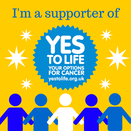
Cutting back on drug prescribing – a big step forward
The British Medical Journal (BMJ) have just published a new paper, “Choosing Wisely in the UK: the Academy of Medical Royal Colleges’ initiative to reduce the harms of too much medicine” (1)
Considerable focus was on the potential of over prescribing of medication for hypertension (BP). It got a swift rebuttal from a ‘charity’ owned by an Institute which is a part of St Bart’s Hospital and must make us suspicious of possible pharmaceutical interest!
Simple life style changes, increase in exercise, diet and basic natural supplements could be more than ample in addressing mild or even moderate high blood pressure (5)
The paper starts by saying “The idea that some medical procedures are unnecessary and can do more harm than good is as old as medicine itself”. More recently however, in 1998, it was stated that Evidence-based medicine (EBM) is now generally agreed, scientifically, to be the third or fourth leading cause of death in western societies. (2)
The BMJ found in 2009 that of about 2,500 treatments offered in conventional medicine:
- 13 percent are beneficial to the patient
- 23 percent are likely to be beneficial
- 8 percent is a trade-off between benefits and harm
- 6 percent are unlikely to be beneficial
- 4 percent are likely to be ineffective or harmful
- 46 percent have unknown effectiveness (3)
In other words - there is a 64 percent chance that a prescribed treatment will be either harmful, ineffective, or “gosh, we have no idea what might happen.”
And then there is the financial benefit….
A most recent study, published in Nov 2014, entitled “Targeted Use of Complementary Medicines: Potential Health Outcomes and Cost Savings in Australia," concluded that health outcomes are improved and costs reduced when specific complementary medicines are used by high-risk target populations.
Costs incurred in treating diseases such as cardiovascular disease (CVD) and osteoporosis showed startling savings.
Osteoporosis-attributed fracture was reduced by 19.7% when high risk patients were given the use of inexpensive calcium and vitamin D at preventive intake levels. This translates to a staggering potential of 36,783 less fractures in 2015. The report estimated that between 2015 and 2020 the average annual savings from avoiding hospital would be $922 million !
That is the same as a saving of $22.34 for every one dollar spent on complementary medicine.
Be wary, by the way, as in 2012 the highly respected medical journal Heart published a study on 24,000 people and suggested that calcium supplements may increase heart attacks. Controversy remains but I and others suspect it is the non-natural form of supplemental calcium that is the issue. It is unfortunately this that is most prescribed by doctors. DO NOT USE CALCIUM CARBONATE AS IT MAY HAVE AN ASSOCIATION WITH HEART ATTACKS.
The Australian report also explored the burden of cardiovascular disease (CVD). It was estimated that the relative risk of hospitalization due to a CVD event could be reduced by 4.9 percent and 6,894 average annual medical events avoided between 2015 -2020 if all Australians over 55 years old with CVD were to take omega-3 fatty acids at a preventive level. ( USE PLANT BASED OR KRILL EXTRACTED OMEGA 3 IN PREFERRENCE TO FISH BASED OILS)
The average annual benefit cost ratio from 2015 to 2020 would be $8.49 for every dollar spent on the omega-3 fatty acids.
Integrated and functional doctors and complementary medical practitioners are already aware of how simple changes to lifestyle, exercise, diet and basic supplementation benefit both prevention and the treatment of a broad range of illness and disease. Such evidence is abundant and needs to be brought into medical training to help our health and save our National Health Service.
References
- BMJ 2015; 350 doi: http://dx.doi.org/10.1136/bmj.h2308 (Published 12 May 2015)Cite this as: BMJ 2015;350:h2308
- JAMA. 1998 Apr 15;279(15):1200-5
- ISSN 1752-8526 © BMJ Publishing Group Limited 2008. All rights reserved
- Commissioned by the Australian Self Medication Industry (ASMI)
- “Live Longer Live Younger”, Dr Rajendra Sharma, Watkins Publishers





